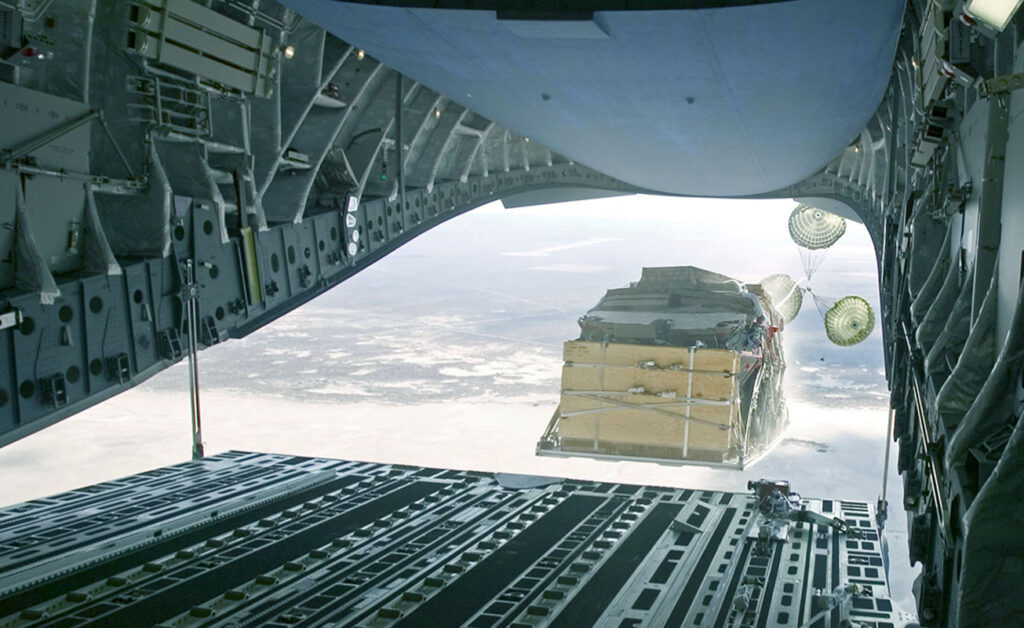
Aerial delivery is another term for the airdrop of cargo, vehicles, equipment, and even people to a desired location on the ground. Because most threats to the military are on the ground, modern technology lends itself to aircraft airdrops at high altitudes and out of harm’s way. It allows a unit on the ground to receive the cargo at a location of the unit’s choosing.
In the military, the loadmaster is the active aircrew member who is responsible for loading and unloading the cargo and people on the aircraft and aircraft systems. The loadmaster operates the very technical aircraft airdrop systems, ensuring the safe delivery of all materials and crew.
Brief History Of Aerial Delivery

The Royal Air Force pioneered the capability in 1915 during World War I dropping supplies in Iraq. Airdrop of cargo started in the U.S. military during World War II, with very little variation of practice since then. The U.S. Air Force began using precision ground mapping radars and computers in the 1970s, to allow the navigator to conduct precision airdrops from any altitude. Drops in the past were unguided, meaning that the load coming out of the aircraft was subject to high winds.
Today, many successful airdrop operations have been accomplished through improved technology and methods. In the military context, aerial delivery has become more accurate thanks to the Joint Precision Airdrop System.
According to the National Defense, precision airdrops are most useful in difficult terrain or dangerous environments where the margin for error is very small. Airdrops can be used to resupply remote forces, pre-position supplies, deliver equipment following chemical warfare, and also be used for humanitarian efforts.
What Is A Joint Precision Airdrop System?
A Joint precision airdrop is simply a joint science and technology effort directed at increasing cargo airdrop accuracy and survivability from high altitudes. Military services of the United States have brought their efforts and resources together to pursue the Joint Precision Airdrop System (JPADS).
The Joint Precision Airdrop System (JPADS) is a high-altitude, all-weather capable, global positioning system-guided, precision airdrop system that provides increased cargo control upon release from the aircraft.
Aerial Delivery In The Military Today
Successful execution of military airdrops in high-risk situations is essential in the world today. According to the U.S. Airforce, halfway through 2011 Airmen had airdropped more than 39.5 million pounds of cargo in Afghanistan. Through the use of technical air-delivery systems, these aerial deliveries have successfully landed in designated drop zones.
Personnel should be trained extensively in aerial delivery, for safety and precision. Missing drop zone targets results in loss of payload and also adds danger to the personnel on the ground. Airdrop accuracy is essential; to not only avoid populated areas of endangered persons but also to avoid accidental hostile location infiltration.
The US Army will never control the ground under the sky if the US Air Force does not control the sky over the ground.” — Col Gene Cirillo, USAF (Ret)
